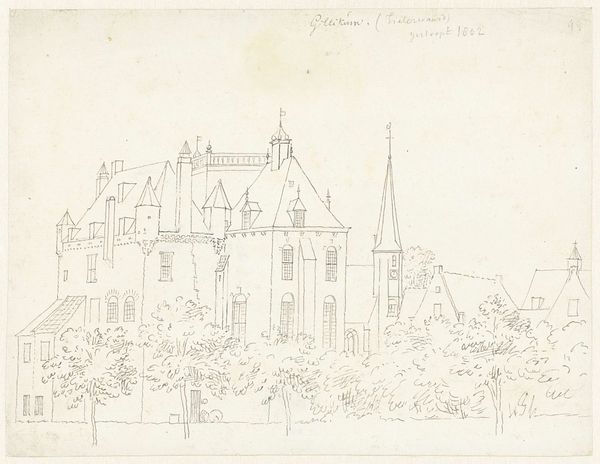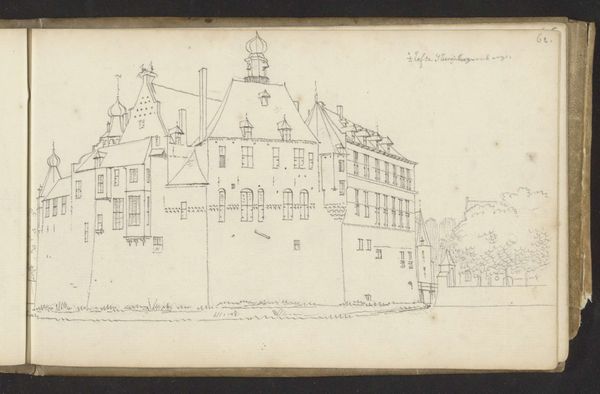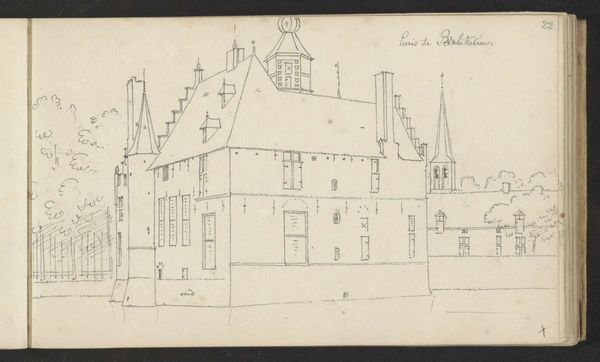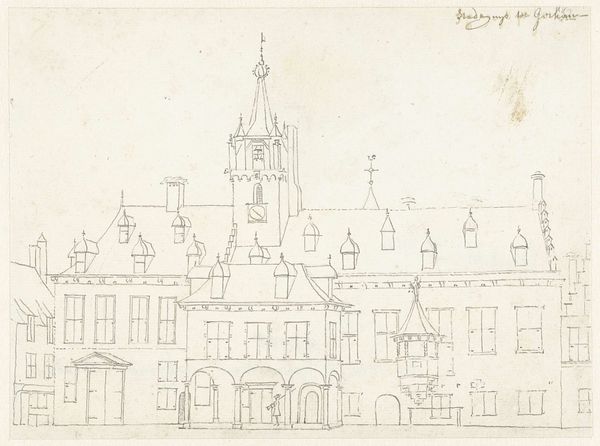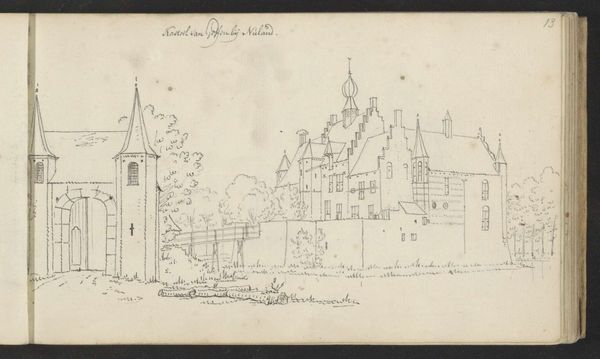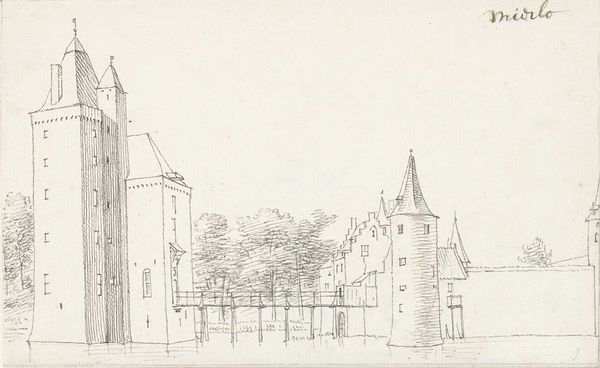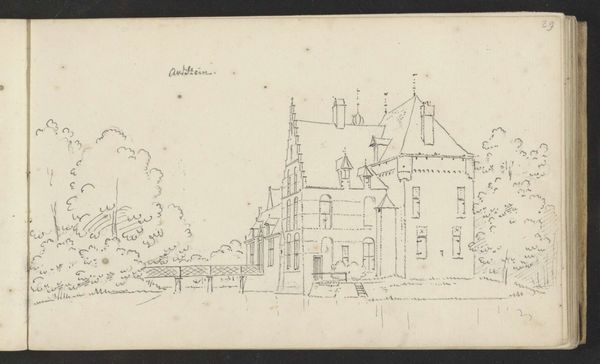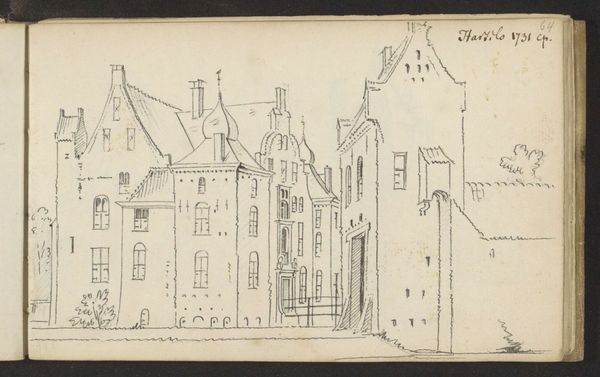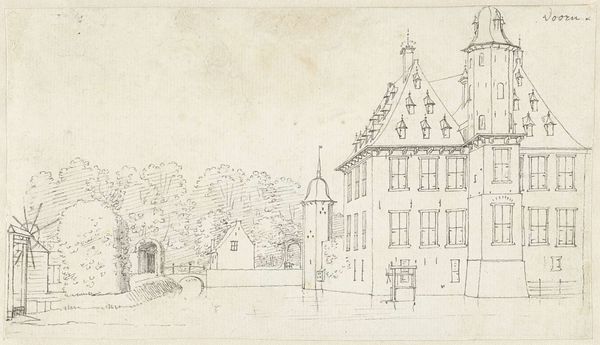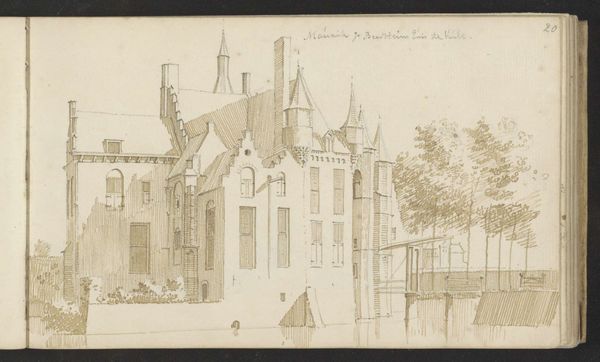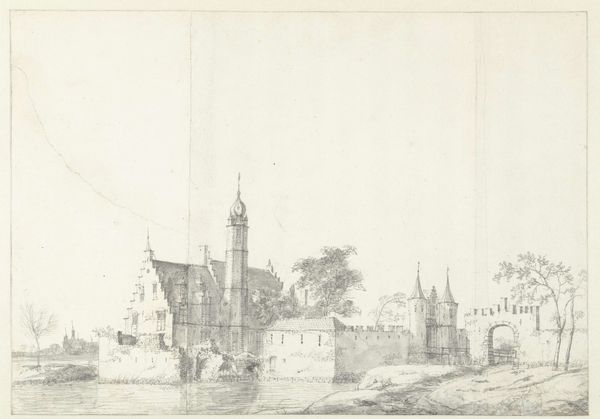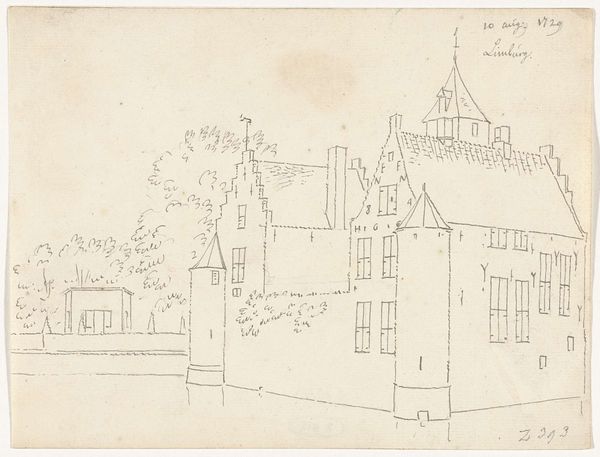
drawing, ink, pen, architecture
#
architectural sketch
#
drawing
#
quirky sketch
#
baroque
#
pen sketch
#
old engraving style
#
landscape
#
personal sketchbook
#
ink
#
idea generation sketch
#
sketchwork
#
pen-ink sketch
#
pen work
#
pen
#
cityscape
#
architecture
#
initial sketch
Dimensions: height 128 mm, width 202 mm
Copyright: Rijks Museum: Open Domain
Editor: This is "Het kasteel te Helmond," or "The Castle at Helmond," a pen and ink drawing by Cornelis Pronk, dating from between 1720 and 1740. It's a rather spare architectural sketch. What social and political narratives do you think Pronk might be engaging with through this work? Curator: Pronk was documenting, but also interpreting, the architecture of his time. Consider the context: the Dutch Republic was transitioning from its Golden Age. This kind of architectural record could reflect a nostalgia for power structures, framing the castle not just as a building but as a symbol of authority and a certain social order in a changing world. How does that understanding of shifting societal structures impact your view? Editor: I guess it gives the sketch a kind of... weight. It's not *just* a drawing; it's Pronk's commentary on power, history, and perhaps a longing for an established hierarchy in a time of social change. Curator: Exactly! And it raises the question: who was this "authority" for, and at whose expense was it maintained? These grand structures often symbolize not only power but also exclusion. How might we, as contemporary viewers, interrogate these symbols? Editor: By asking those questions! By not simply accepting the grandeur, but thinking critically about what that grandeur represents in terms of social equity, access, and even the labor involved in constructing these monuments. Curator: Precisely. It's about engaging with the historical context but also using that knowledge to question present-day power structures and inequalities. It encourages us to consider whose stories are amplified and whose are marginalized. Editor: That really shifts my perspective. It is more than a pretty landscape sketch from the Baroque period. Thank you. Curator: It’s about constantly re-evaluating art's role in shaping our understanding of the past and present, through the lens of the people who lived and lives in relationship to it.
Comments
No comments
Be the first to comment and join the conversation on the ultimate creative platform.
